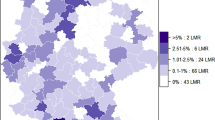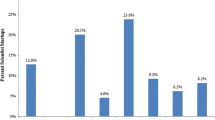Abstract
Using detailed data on biotechnology in Japan, we find that identifiable collaborations between particular university star scientists and firms have a large positive impact on firms' research productivity, increasing the average firm's biotech patents by 34 percent, products in development by 27 percent, and products on the market by 8 percent as of 1989–1990. However, there is little evidence of geographically localized knowledge spillovers. In early industry formation, star scientists holding tacit knowledge required to practice recombinant DNA (genetic engineering) were of great economic value, leading to incentives motivating their participation in technology transfer. In Japan, the legal and institutional context implies that firm scientists work in the stars' university laboratories in contrast to America where the stars are more likely to work in the firm's labs. As a result, star collaborations in Japan are less localized around their research universities so that the universities' local economic development impact is lessened. Stars' scientific productivity is increased less during collaborations with firms in Japan as compared to the U.S.
Similar content being viewed by others
References
Branstetter, L. and M. Sakakibara, 1998, 'Japanese Research Consortia: A Microeconomic Analysis of Industrial Policy', Journal of Industrial Economics 46 2, 207–233.
Cameron, A.C., and P.K. Trivedi, 1990, 'Regression-Based Tests for Overdispersion in the Poisson Model', Journal of Econometrics 46, 347–364.
Cohen, S., A. Chang, H. Boyer, and R. Helling, 1973, 'Construction of Biologically Functional Bacterial Plasmids in vitro', Proceedings of the National Academy of Sciences 70 11, 3240–3244.
Darby, M.R. and L.G. Zucker, 1996, 'Star Scientists, Institutions, and the Entry of Japanese Biotechnology Enterprises', National Bureau of Economic Research Working Paper No. 5795.
GenBank, 1990, Release 65.0, machine readable data base, Palo Alto, CA: IntelliGentics, Inc.
GenBank, 1994, Release 81.0, machine readable data base, Bethesda, MD: National Center for Biotechnology Information.
Griliches, Z., 1990, 'Patent Statistics as Economic Indicators: A Survey', Journal of Economic Literature 28, 1661–1707.
Hausman, J., B.H. Hall, and Z. Griliches, 1984, 'Econometric Models for Count Data with an Application to the Patents-R & D Relationship', Econometrica 909–938.
Jaffe, A.B., 1986, 'Technological Opportunity and Spillovers of R & D; Evidence from Firms' Patents, Profits, and Market Value', The American Economic Review 76 5, 984–1001.
Jaffe, A.B., 1989, 'Real Effects of Academic Research', American Economic Review 79 5, 957–970.
Klevorick, A.K., R.C. Levin, R.R. Nelson, and S.G. Winter, 1995, 'On the Sources and Significance of Interindustry Differences in Technological Opportunities', Research Policy 24 2, 185–205.
Nikkei Biotechnology, 1990, Biotechnology Guide Japan, 1990- 1991, Japan-America Management, Ltd., trans., New York, NY: Stockton Press. [Translated from the Section on Japanese Companies in '89 Sekai no Baio Kigyo 800sha (The World's 800 Bioindustry Companies)]
Nikkei Biotechnology, 1994, 94/95 sekai no baio kigyo 2000-sha ['94/'95 World's 2000 Bioindustry Corporations], Tokyo, Japan: Nikkei Business Publications.
North Carolina Biotechnology Center, 1992, North Carolina Biotechnology Center Japanese Companies Database, machine readable data base, Research Triangle Park, NC: North Carolina Biotechnology Center.
Sindelar, R.D., 1992, 'OverviewrPreview of Current and Future Recombinant DNA-Produced Pharmaceuticals', Drug Topics, Supplement, pp. 3–16.
Sindelar, R.D., 1993, 'The Pharmacy of the Future', Drug Topics 137 9, 66–84.
U.S. Department of Commerce, Patent and Trademark Office, 1993, Patent Technology Set: Genetic Engineering, CDROM, machine readable data base, Washington, DC: U.S. Department of Commerce, Office of Information Systems.
Weinstein, D.E. and Y. Yafeh, 1995, 'Japan's Corporate Groups: Collusive or Competitive? An Empirical Investigation of Keiretsu Behavior', Journal of Industrial Economics 43 4, 359–376.
Wooldridge, J.M., 1991, 'On the Application of Robust, Regression-Based Diagnostics to Models of Conditional Means and Conditional Variances', Journal of Econometrics 47, 5–46.
Zucker, L.G. and M.R. Darby, 1996, 'Star Scientists and Institutional Transformation: Patterns of Invention and Innovation in the Formation of the Biotechnology Industry', Proceedings of the National Academy of Sciences 93 23, 12709–12716.
Zucker, L.G. and M.R. Darby, 1997, 'Present at the Revolution: Transformation of Technical Identity for a Large Incumbent Pharmaceutical Firm after the Biotechnological Breakthrough', Research Policy 26 4 & 5, 429–446.
Zucker, L.G. and M.R. Darby, 1997 (1997b), 'The Economists' Case for Biomedical Research', in C. Barfield and B. Smith eds., The Future of Biomedical Research, Washington, DC: American Enterprise Institute for Public Policy Research and The Brookings Institution (copublishers).
Zucker, L.G. and M. R. Darby, 1998, 'Capturing Technological Opportunity Via Japan's Star Scientists: Evidence from Japanese Firms' Biotech Patents and Products', National Bureau of Economic Research Working Paper No. 6360.
Zucker, L.G., M.R. Darby, and J. Armstrong, 1994, 'Intellectual Capital and the Firm: The Technology of Geographically Localized Knowledge Spillovers', National Bureau of Economic Research Working Paper No. 4946.
Zucker, L.G., M.R. Darby, and J. Armstrong, 1998, 'Geographically Localized Knowledge: Spillovers or Markets?', Economic Inquiry 36 1, 65–86.
Zucker, L.G., M.R. Darby, and M.B. Brewer, 1994, 'Intellectual Capital and the Birth of U.S. Biotechnology Enterprises', National Bureau of Economic Research Working Paper No. 4653.
Zucker, L.G., M.R. Darby, and M.B. Brewer, 1998, 'Intellectual Human Capital and the Birth of U.S. Biotechnology Enterprises', American Economic Review 88 1, 290–306.
Zucker, L.G., M.R. Darby, M.B. Brewer, and Y. Peng, 1996, 'Collaboration Structure and Information Dilemmas in Biotechnology: Organizational Boundaries as Trust Production', in R.M. Kramer and T.R. Tyler eds., Trust in Organizations, Thousand Oaks, CA: Sage, pp. 90–113.
Author information
Authors and Affiliations
Rights and permissions
About this article
Cite this article
Zucker, L.G., Darby, M.R. Capturing Technological Opportunity Via Japan's Star Scientists: Evidence from Japanese Firms' Biotech Patents and Products. The Journal of Technology Transfer 26, 37–58 (2001). https://doi.org/10.1023/A:1007832127813
Issue Date:
DOI: https://doi.org/10.1023/A:1007832127813




